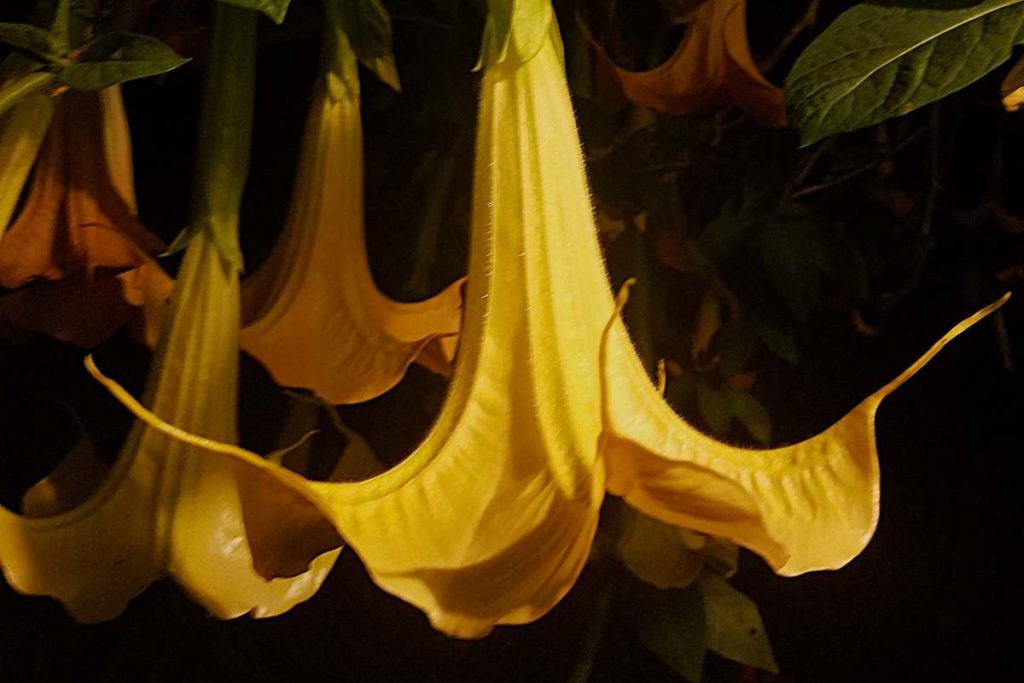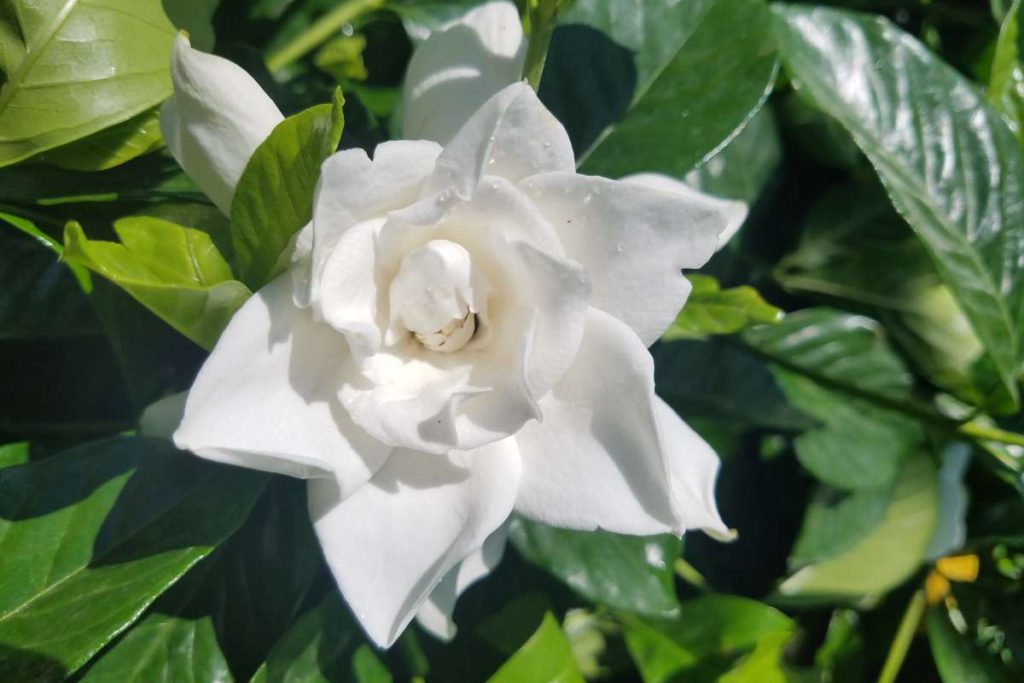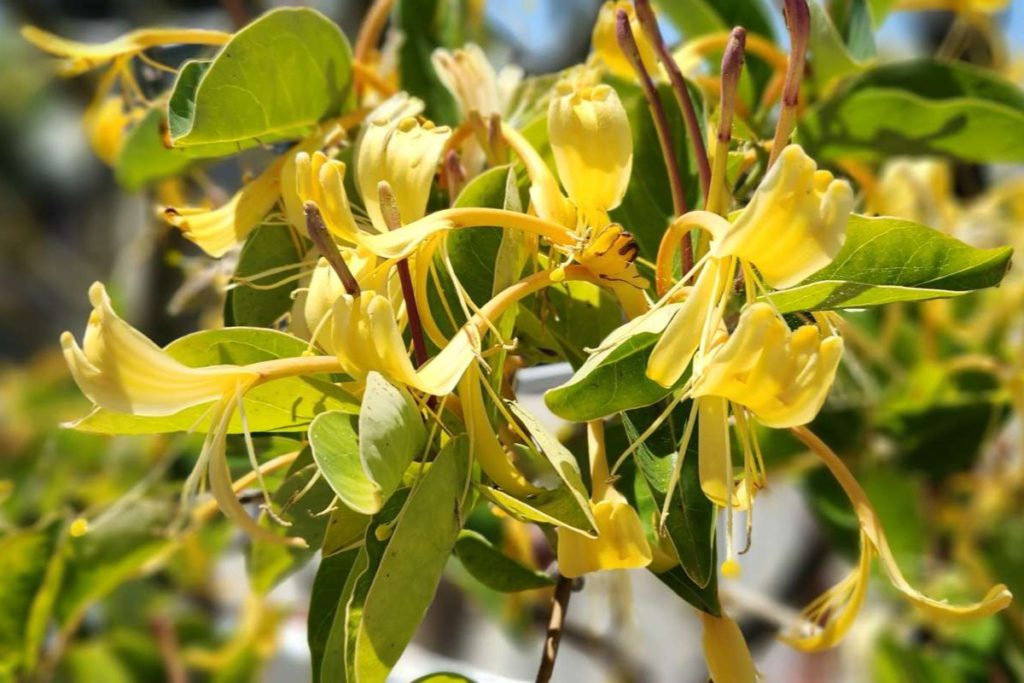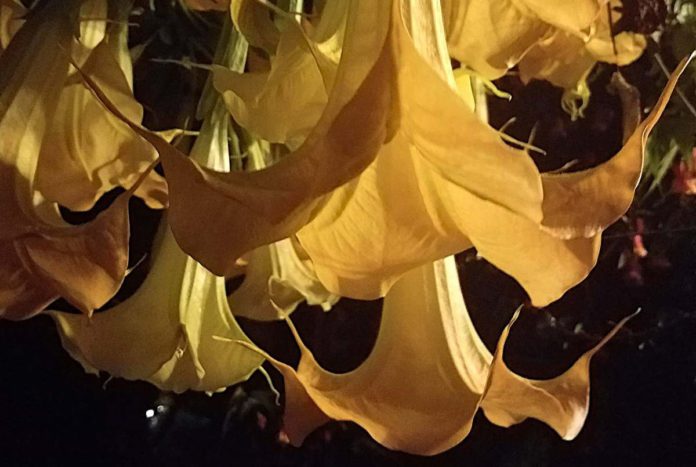The concept of growing particular plants to attract pollinators is not new. Many cultures have practiced this throughout history when planting crops. Native Americans grew carefully selected pollinator-friendly plants that would support their local ecosystem. An increased awareness over the past 20 years of the steep decline in pollinators has popularized pollinator gardens meant to attract birds, bees, beneficial insects and butterflies.
Plants that attract nocturnal pollinators such as moths and bats are missing from many pollinator gardens. It is unfortunate because these scented plants fill the warm night air with their spectacularly perfumed bouquets.
“Night flowering plants,” or “moonflowers” are catch-all names for plants with flowers that emit strong fragrances at night, even though these plants have little else in common. Some are shrubs, others are vines. Some are small plants, others are cacti.
The “night flowering” label can be misleading, as many of the plants have blooms that remain open during the day. They just are not as aromatic during daylight hours. There are, however, fragrant plants that do not bloom during the day, instead blooming in the early evening and/or throughout the night.
There is also a plant, Ipomoea alba, that has the common name “moonflower” which can add confusion when referring to the other generic moonflowers.

“Night flowering plants” are not nocturnal plants. They get most of their energy from photosynthesizing sunlight. They respire or convert stored energy at night into usable forms for growth and other functions. Although plants do not sleep, they are less active at night. They have circadian clocks or day-night cycles like other living organisms that synchronize their active day and non-active night hours.
Studies have shown that certain circadian mechanisms are present only in the flower tissue at night, not in the rest of the plant. This suggests the circadian clock operates differently in other parts of the plant during the day. Non-night-flowering plants in contrast have flowers that are more in tune with the plant’s daytime circadian rhythms.
Placement in the garden is not as important for night flowering plants if they are only being planted to support nocturnal pollinators. The plants should be in locations based on their daytime growing requirements. They should be positioned near patios, walkways, porches, decks and windows if they are being grown for their night time fragrance as well for attracting pollinators.
Many night flowering plants can be grown in pots making them accessible to apartment and condominium patios and balconies. Simply plant them where their aroma can be enjoyed without needing to make a special trip into the garden.
The flowers are usually white or pale purple and yellow, which makes them more visible to pollinators in moonlight. So in most cases, they will not add vibrant daytime color.

There are many night flowering plants that thrive in the different East Bay climates. Below are six to “sniff out” from local nurseries.
Ipomoea alba, or moonflower, is a white fast-growing flowering morning glory vine with lush heart-shaped leaves. It produces large white trumpet-shaped flowers which open at dusk and bloom throughout the night. They emit a powerful, sweet jasmine-like scent.
Brugmansia, or Angel’s Trumpet, is a common shrub or small tree that has multiple bloom cycles. It has large downward oriented trumpet-shaped flowers. Varieties can be white, purple, red, yellow, orange, peach and pink and many are fragrant at night. Their sweet aromas attract nocturnal pollinators during the night, and their vibrant flower colors entice hummingbirds and bees during the day.
Cestrum nocturnum, or night blooming jasmine, lady of the night or night-scented cestrum, is one of the strongest-scented plants. It releases a delightfully sweet fragrance, which can be enjoyed over 500 feet away. This medium sized shrub produces hundreds of small trumpet-shaped white to pale yellow flowers that remain closed during the day, opening as the sun sets.
Epiphyllum oxypetalum, or Queen of the Night, is a night-flowering spineless plant in the cactus family. It is commonly grown as a houseplant. It has long, flat green stems that usually grow between 12 and 16 inches long. The tips produce white eight-inch diameter fragrant ornate flowers.

Honeysuckles are deciduous or evergreen climbing vines that produce nectar in their tubular-shaped flowers. Deciduous varieties tend to produce more spectacular displays of flowers, which are more fragrant at night and attractive particularly to moths. However, during the day, the syrupy nectar attracts hummingbirds, bees and other beneficial pollinators.
Gardenias are a genus of plants in the coffee family that produce beautiful white fragrant tropical flowers that are most aromatic at night. This small shrub, native to Australia, and sub-tropical regions of Africa, Asia and the Pacific Islands, grows well in the Bay Area in containers or in the ground. Gardenia flowers have a tropical look, but it is their perfume-like fragrance that really brings home the smell of paradise.
There is a poetic expression that says “gardens don’t sleep.” Nighttime activity in the garden is often overlooked. Planting night blooming flowers will not only support nocturnal pollinators but also give the garden a fragrant evening scent. You will no longer have to wait until morning to wake up and smell the roses.
Daniel O’Donnell is the co-owner and operator of an organic landscape design/build company in Fremont. Chrysalis-Gardens.com




